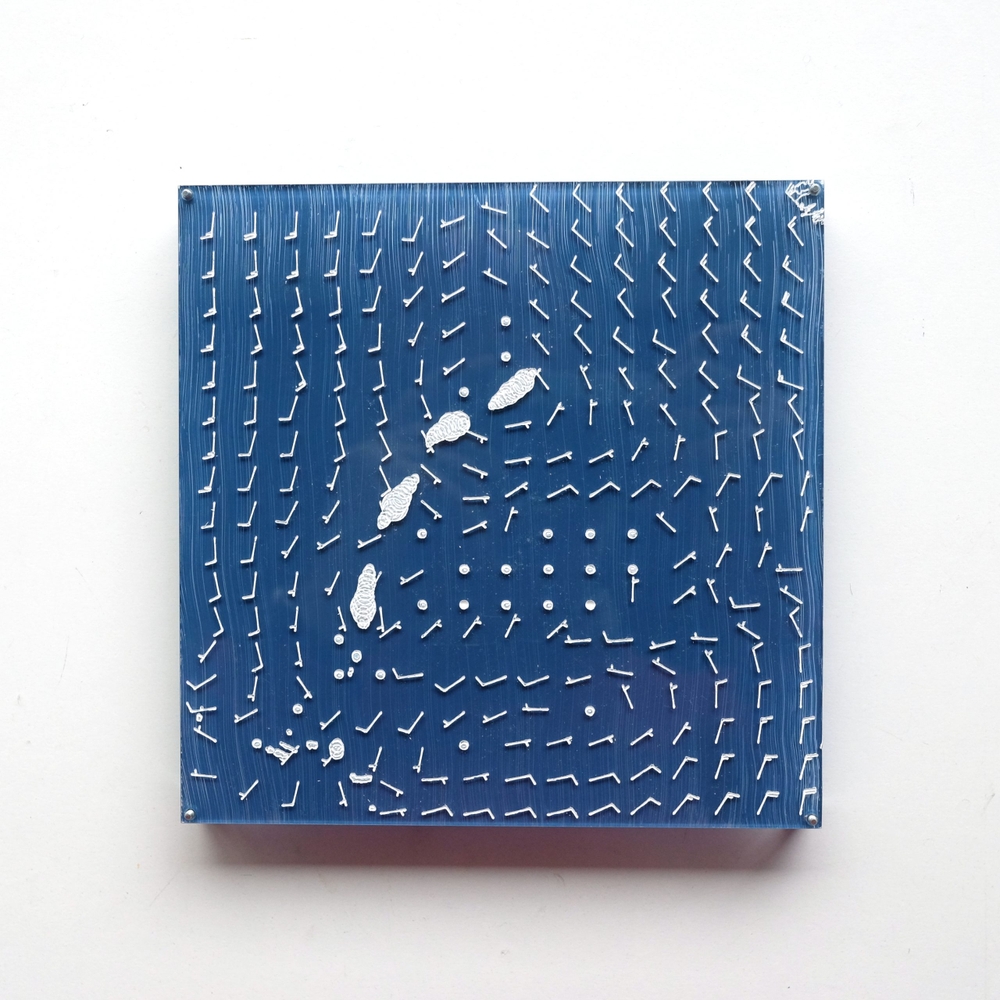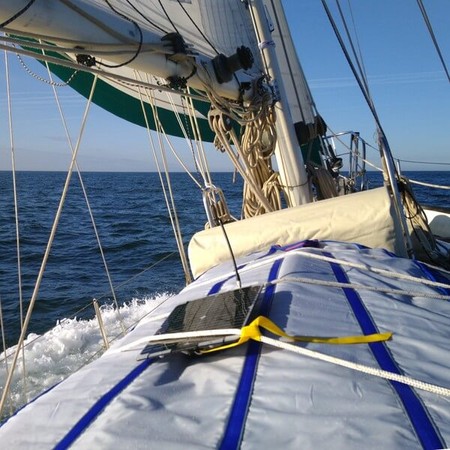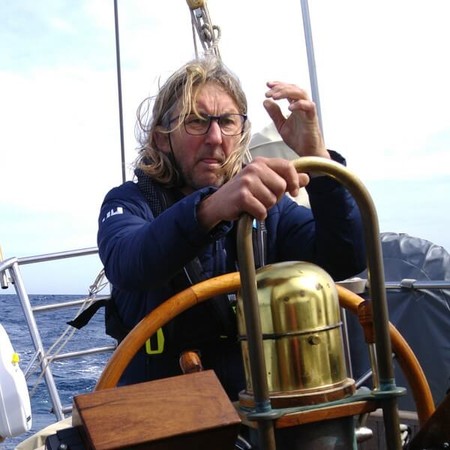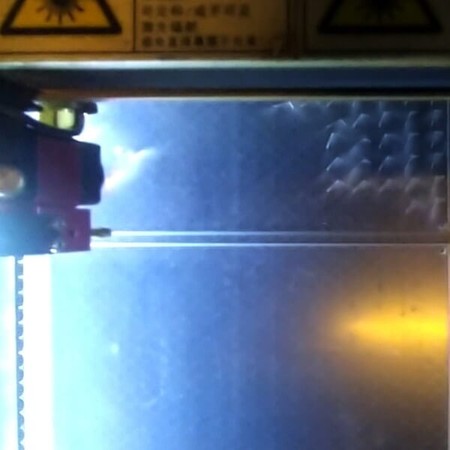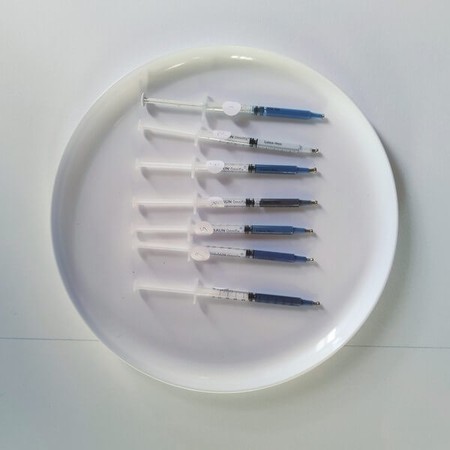Julian Priest and Gerry Dinnage
2022
7 x 180 by 180 mm, Acrylic paint on laser cut acrylic, Satellite LoRa network, Sailing voyage, Sightings, Solar panel, Python scripts, Weather data, Chart.
“Of oceanic waters some are characterized by intense blues”
Franz Boas, Contributions to the knowledge of the colour of water, 1881
If you have ever sailed in the Atlantic, you may have noticed that the colour of the sea can be an intense blue. It is perhaps a combination of the 5 kilometer depth, the clarity and the lack of silt and sediment, and the light conditions. The colours are far from the muddy hues of coastal waters.
Between May and August 2022, the sailing yacht Stella Maris undertook a voyage around the North Atlantic from Denmark to Portugal, Madeira, the Azores, Ireland, Scotland and back to Denmark. Priest and Dinnage crewed on various legs and we discussed the impossibility of capturing, describing and communicating the intangible colour of Atlantic Blue. This process was an attempt to do so.
During the Azores to Ireland leg, Dinnage was on board and Priest was on land in Denmark. Dinnage is a professional painting restorer and has an ability to match colours precisely. Each day of the leg at midday Dinnage made a sighting of the colour of the Atlantic Ocean and recorded the colour as % paint mixing instruction. The colour sighted is not an average, it is the predominant colour and value as it would be painted.
The colour instruction was sent as a short sub 192 byte text transmission over a solar powered LoRa transmitter node using the Swarm satellite constellation and its message store and forward system. The text was then downlinked to the SWARM ground station and emailed to Priest in Denmark.
Using a pre-agreed selection of specific acrylic paints, Priest used the instructions to accurately mix the colours using medical syringes.
The SWARM node also sent a regular transmission of the boat’s accurate GPS location and the voltage of the solar panel which gave a data point of the light level experienced at each location.
During the period of the voyage Priest monitored the weather, downloading GRIB files of the wind speed and direction for the entire North Atlantic region from NOAA-GFS weather servers.
There is one acrylic panel for each of the 7 days of the voyage for which Dinnage made a colour sighting, and the back of the panel is painted with that colour. The front face of the panel is laser etched with three layers of data.
The base layer is a Mercator chart showing the start and end points of the voyage; Angra do Heroísmo in the Azores, and Dingle in Ireland.
A grid of overlaid wind barbs show the direction and speed of the wind.
Lastly the track of the vessel is shown plotted in series of overlapping circles that describe both the vessel position and the light intensity of that day. The days and nights of the voyage are visible in the plot.
The completed panels show therefore the reported colour of Atlantic Blue as seen by Dinnage, the location of the colour sighting, and the light and weather conditions that contributed to that peculiar elusive Atlantic Blue.
